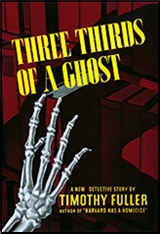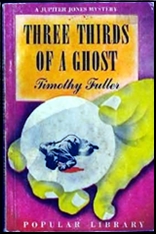CHRISTOPHER NICOLE – Angel Rising. Anna Fehrbach #6. Severn House, hardcover, 2008.

…Anna Fehrbach, alias the Countess von Widerstand, alias the Honourable Mrs Ballantine Bordman, alias Anna Fitzjohn. Her ebullient confidence had carried her, when hardly more than a girl, through the horrors of the Second World War, not to mention the traumas of trying to survive afterwards, which for her had been greater than for most, as she had remained for too long the most wanted woman in the world.
A fair summation from the prologue of the sixth entry in a series of the heroine of this sexy playful historical series by Christopher Nicole, a British writer of big sexy historical thrillers in the Wilbur Smith/James Leasor vein, best known here for his popular spy novels as Andrew York about professional assassin Jonas Wilde (*) and later CID operator Tallant in the Cockpit country of Jamaica.
When I say sexy, I should point out I mean in the James Bond sense and not the Lady from L.U.S.T. or Man from O.R.G.Y. vein. While these may not stop at the edge of the bed neither do they overly dwell on activities between the sheets, the object being tease more than fulfillment. In fact the best I can describe this series is a cross between Ilsa She Wolf of the SS, Geoffrey Bocca’s soft core Commander Amanda titles about a sort of female Candide serving in the SOE during WWII, Modesty Blaise, and Flashman with far more ties to the latter two in style and mood.
At eighteen in 1938 Austro-Irish Anna Fehrbach and her family are arrested during the Hitler putsch in Austria. Forced by the SS, who hold her family hostage, Anna becomes the top agent of the SD, their number one assassin and mistress of Reyhard Heydrich, at one point even pursuing an attempt on Joseph Stalin, but eventually Anna is recruited by MI6 and her future husband Clive Bartley and becomes a double agent, even planning the execution of Heydrich in Czechoslovakia and plotting the failed coup against Hitler.
In and out of bed whether with Heydrich, Stalin, or Hitler Anna is a busy girl.
That is all back story as this one begins at the end of the war when the Soviets under Stalin’s orders and MVD (predecessor to the KGB) head Beria’s directions decide along with the Americans and Anna’s ex-American lover, Joe Andrews, formerly OSS and now the fledgling CIA, agree Anna is too dangerous to live, and join forces to find and kill her leaving her with no where to hide, pursued and betrayed by the deadliest killers in the world not to mention vengeful Nazis.
The chase takes her from the highlands of Scotland to Brazil, Germany and Switzerland, a confrontation with her SS trained and loyal Nazi sister, Katherine, and a reckoning with former lover Joe Andrews until Anna wins a brief respite and relieves the Soviets of a considerable sum of money along the way.
‘I gave up trusting people, most people, long ago. But I have grown to understand a little of human motivation; there are only three that matter: love, fear and greed.’
‘You wouldn’t include hate?’
‘Hate is merely an aspect of fear. We only hate the things we fear.’
‘And thus you hate no one.’
‘Not right now. Which is not to say that there are a few people I believe the world would be a better place without.’
Anna is described as amoral, but instead is something of an original moralist along the lines of Frank McCauliffe’s Augustus Mandrel, Mark Gattiss’s Lucifer Box, and Kyril Bonfigioli’s Mortdecai. She is all the more fun for it eschewing the tiresomely earnest purity of too many of contemporary fiction’s cold-blooded killers.
This history is of the playful behind-the-scenes type, both accurate and imaginative, the plot fast moving, and the pleasure in watching the beautiful and brilliant Anna (she has an IQ of 173) outwit everyone and anyone trying to use her or kill her, and often both. It is a lighter variation of the kind of thing both Ian Fleming and William F. Buckley did, offering a playful peek at the inner workings of the great and powerful with their hair down and make-up off.
Yes, it is nonsense, but not without some actual models in the case of Anna, albeit in a less superhuman mold. I don’t want to oversell this; it is fluff, but it is good fluff of the kind not seen as often as it should be these days, not bloated or self important, and Anna’s cheerful blend of amoral survival, healthy (and not so healthy) sexuality, and crisp action and violence is exactly the kind of beach read that used to be a summer staple before the advent of the hernia-inducing beach book.
Anna threw herself sideways, rolling across the floor but at the same time dragging her dress to her waist to reach the Walther. The two men turned back again, and died before they realized what was going on. Anna kept on firing.
The writing is crisp and professional, the nonsense factor the tongue-in-cheek sort of the better Bond and Modesty Blaise imitators (which Nicole was), and as I said, the history accurate if playfully tweaked as only the better thrillers manage. Think Dennis Wheatley’s Gregory Sallust without the clunky info dumps.
Best of all it never overstays its welcome unlike too many thrillers today.
By the time Anna has earned her rest you will likely feel she fully deserves it and be wanting to join her on other adventures, done in a high style that seems to be lost to many of today’s more heavy-handed thriller writers and their earnest Boy Scout heroes. Pink champagne and caviar with a Vodka chaser taken in proper amounts makes a nice change up from the lite-beer and potato chip boys of too many modern thriller series.
There is something to be said for style above all else in entertainment which is the only serious intent here.
‘And you mean you and Clive didn’t manage to sneak off and live happily ever after, spending your loot?’
‘Not right then. We had our moments. But I was about to find out just how cold the Cold War could get.’
‘So tell me, did you ever come face to face with Beria?’
Anna Fehrbach smiled.
To be, as they say, continued.
—
(*) Jonas Wilde debuted in The Eliminator and went on to a long and successful career, most of the books published here in paperback by Berkeley and even resulting in a solid little film, Danger Route, starring Richard Johnson as Wilde, which Quentin Tarantino champions as a model of its kind and has often said the wanted to remake.
As Nicole the author also penned a juvenile spy series about young agent Jonathan Anders (published here by Dell). He is a popular historical novelist in England with numerous series. The Anna Fehrbach series is up to the ninth entry in that series, and I warn you Nicole is nothing if not prolific…
The Anna Fehrbach series —
1. Angel from Hell (2006)
2. Angel in Red (2006)
3. Angel of Vengeance (2007)
4. Angel in Jeopardy (2007)
5. Angel of Doom (2008)
6. Angel Rising (2008)
7. Angel of Destruction (2009)
8. Angel of Darkness (2009)
9. Angel in Peril (2013)

